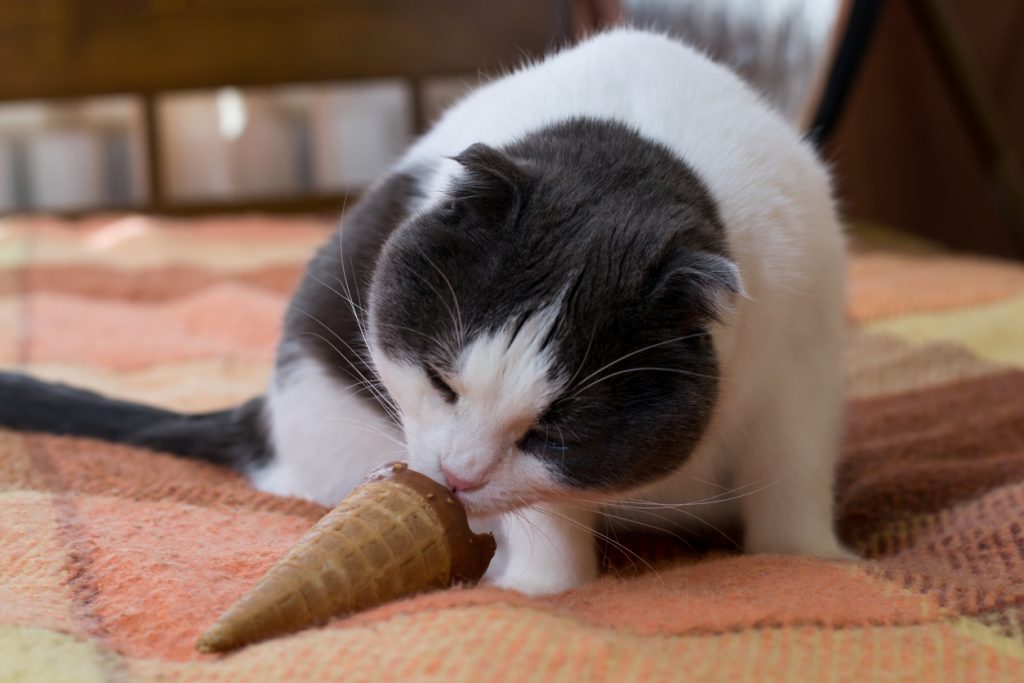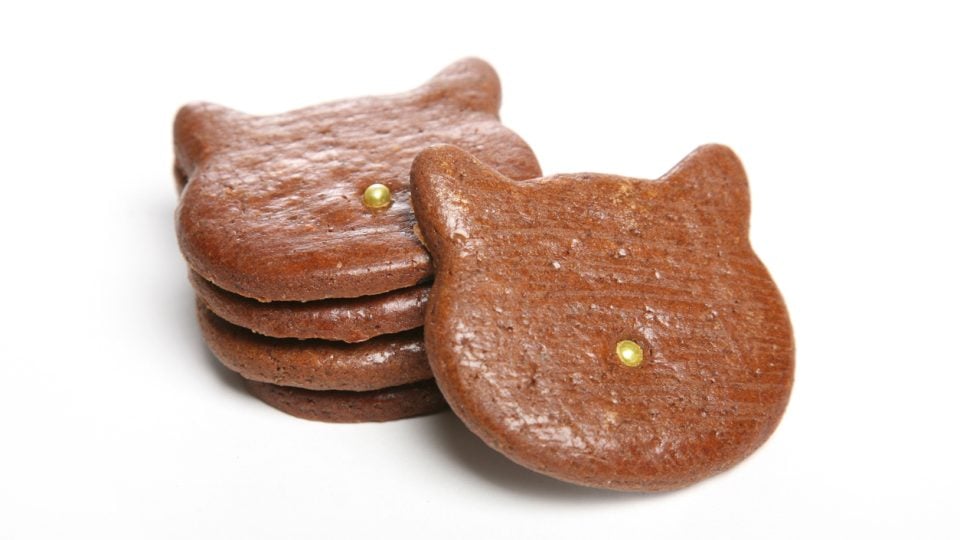I don’t know about your house, but at mine, chocolate in just about any form doesn’t last too long. As a lifelong chocoholic, if I buy a chocolate bar, or ice cream, or chocolate cake or cookies, I’ve been known to hide it from myself to try to make it last longer than a day. I know not to share chocolate with my dogs, no matter how skillfully they wield those sad puppy dog eyes, but what about my cats? Is it safe to leave an open candy bar on the counter when you have cats?
As the only domesticated animal that is also an obligate, or true carnivore (dogs are known as facultative carnivores), cats are meat eaters through and through, so it doesn’t seem like a cat would even be interested in eating chocolate. But domesticated cats evidently haven’t read the obligate carnivore handbook, and it turns out they can be attracted to chocolate, especially milk chocolate. And if your feline friend found some chocolate and ate it, it could make them very, very ill.

Osobystist/iStock
Why is Chocolate Toxic to Cats?
Chocolate contains a naturally occurring stimulant called theobromine, and, depending on the source, chocolate can sometimes also contain caffeine. While humans can metabolise theobromine and caffeine fairly quickly, cats cannot, and it essentially becomes a stimulant overdose in the cat.
How badly it will affect your cat isn’t always immediately clear. “The degree of toxicity depends on the volume of stimulants, including theobromine/caffeine,” explains Patrick Mahaney, DVM, a holistic veterinarian in Southern California, USA. “The more concentrated the stimulants are in chocolate increases the likelihood consumption of small to large volumes can have a toxic effect.”
How Much Chocolate is Too Much?
Theobromine is most concentrated in unsweetened cocoa powder and moderately concentrated in baker’s chocolate and dark chocolate. It is less concentrated in milk chocolate and baked goods, and white chocolate is essentially non-toxic because it generally contains no stimulants. Dr Mahaney also notes that any chocolate product—sweets or baked goods, for instance—could have additional ingredients that could be harmful to a cat, including coffee, nuts, raisins, and others.
If your cat eats any kind or amount of chocolate, you should be on the phone with your vet pronto. Have as much information as possible about the product they ate, including the type of chocolate, the brand/manufacturer, ingredients, volume eaten, and when it was ingested.
The toxic dose for chocolate in cats is approximately the same as for dogs, Dr Mahaney says. Consumption of stimulants at the 40-50 mg/kg dose can cause cardiac effects (elevated heart rate and blood pressure, arrhythmia, etc.) and greater than 60mg/kg can cause neurologic signs such as trembling, seizure activity, and could even result in death.
Depending on the type and amount of chocolate they ate, a call to the paid-for Animal Poison Line is another option. They can help you figure out if your cat has eaten enough chocolate to warrant an emergency trip to the vet.
Do Cats Even Eat Chocolate?
Despite being renowned for their finicky appetites, cats are known to be interested in chocolate.
“Yes, this is a thing, and cats are known to consume chocolate,” Dr Mahaney says. “But they are generally less apt to do so as compared to their canine counterparts. Cats are often attracted to dairy, which is commonly used in milk chocolate and baked goods, which would make them more apt to eat chocolate products.”
There are also medical conditions that can contribute to your cat’s interest in chocolate. “Some cats have ailments that make them eat more, such as hyperthyroidism and diabetes mellitus, which could predispose your cat to episodes of dietary indiscretion (eating something one should not) and potential consumption of chocolate,” Dr Mahaney explains.
So yes, as a pet parent, you need to be concerned about chocolate consumption by your cat just as you would be for your dog. Keeping chocolate in a sealed container and out of accessible reach by your cat reduces the potential that your cat will get into your chocolate stash.
Lastly, if you find your cat has a sudden interest in things like chocolate, other unusual dietary items, or even just an increase in appetite or thirst, be sure to bring this up at your next vet visit with him. Diagnostic testing such as blood tests, urine, faecal tests, and a complete physical exam should be done as part of a thorough health assessment at least once a year, and more often if your cat is a senior.
These tests can help alert you to whether something more serious is leading to your cat’s chocolate craving. Or if, like me, they just have a passing sweet tooth.



